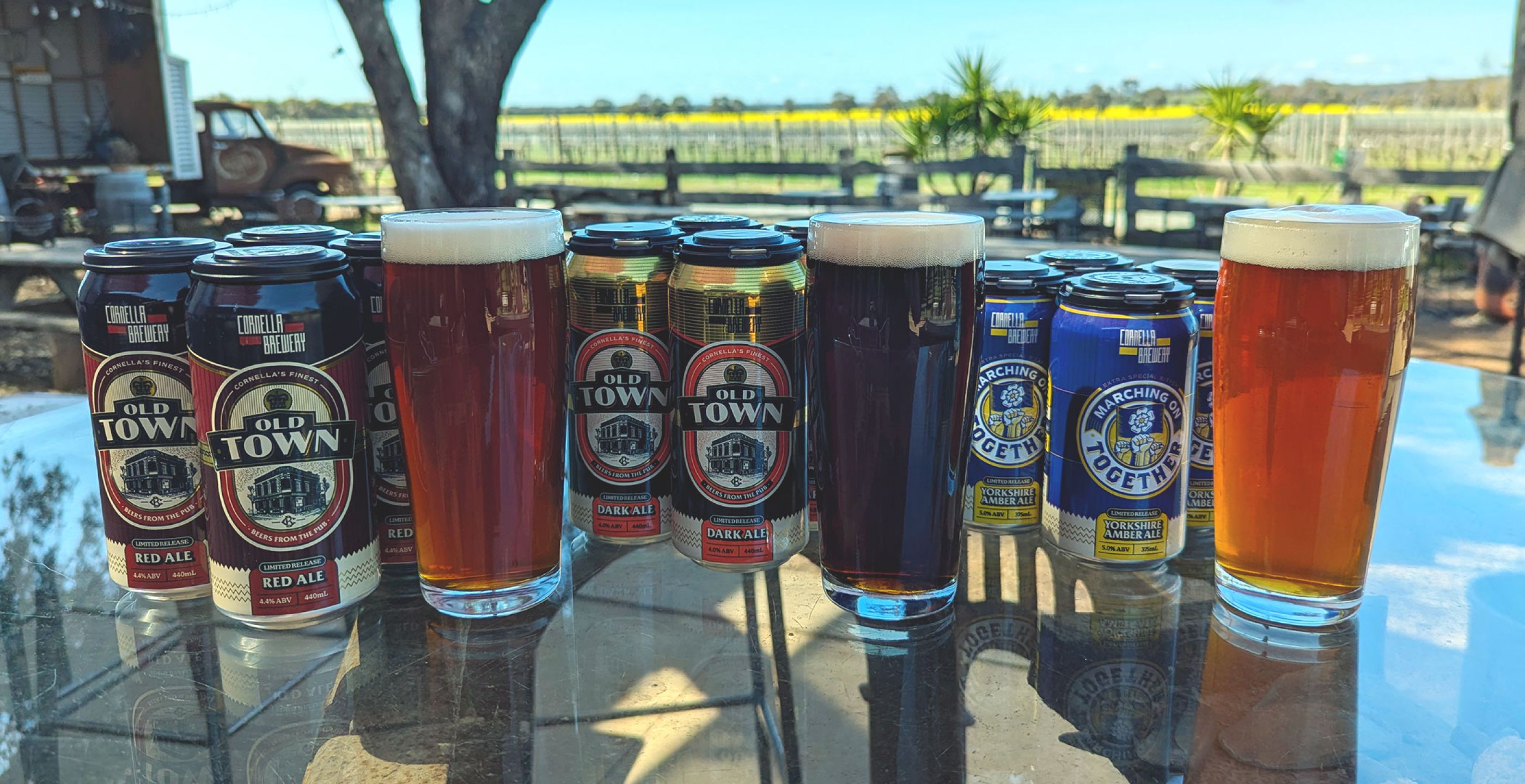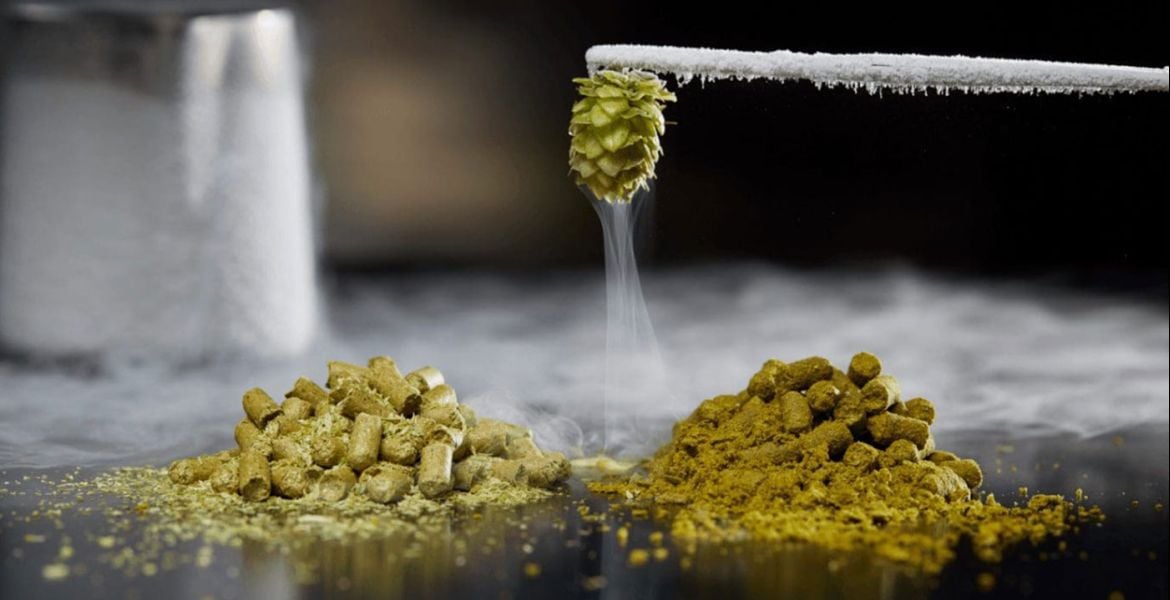Amid all the shenanigans taking place in the local beer world in 2024, one thing has been notable by its absence: talk about trends. Well, unless you're talking about closures and voluntary administrations.
After years in which it was the rise of hazies or the lager renaissance, the unexpected prevalence of non-alcoholic beverages or the growing number of brewers turning to seltzers, there hasn't been a notable newcomer claiming that role so far this year. Although if you look a little closer, maybe something less seismic but quite unexpected has been happening after all...
Back in the early days of The Crafty Pint, you could argue there was far less choice for drinkers. Certainly, there were far fewer breweries and even less craft beer-centric bars and bottleshops, we were a few years away from the explosion in hazies and sours, and the diversity of ingredients on offer to brewers paled in comparison to today. Yet in other ways we were comparatively spoilt.
As interest in beers that weren't Aussie interpretations of European pale lagers grew, brewers took inspiration from many parts of the planet; sure, what was happening in the US was the dominant influence but there was also much in the way of styles from more traditional beer cultures: Belgium, Germany, the UK.
Yet, by the turn of the last decade, for all of the excitement around IPA and its increasingly fragmented family tree, around pastry beers with calorific quotas that would make Homer Simpson consider letting out his muumuu, around just how many grams per litre of hops or purée could be squeezed into a beer, those traditions seemed to be lost. The old world of beer had been shunted to one side as drinkers chased new, newer, newest.

As a result, British styles – which had made up more than ten percent of entries in my first book on Aussie beer back in 2014 – had become rarer than [Old Speckled] hen's teeth. They haven't disappeared completely: a few breweries and bars maintain hand pumps on their bars that typically pour traditional beer styles; ESBs of one form or another sit in a few core ranges; and the odd outlier like Loch Brewery & Distillery in regional Victoria, who still brew nothing else alongside their spirits, or Seven Sheds in North West Tasmania, keep British traditions front and centre.
However, it did feel like there may well be no way back, no way to compete with the fruit-forward, hop-driven takeover of craft beer: who would want to explore the subtler charms of layered malts, fruity yeasts and floral hops when there was a glass of highly aromatic juice on offer? Other than old farts and homebrewers, perhaps.
So imagine my surprise / delight when a run of beers with roots very much in the old world started arriving at Crafty Towers and the homes of our contributors around the country. Dark mild. Special bitter. Old Brown. English IPA. Northern red (not an actual style but we'll get to that later). Now, I'm both from the UK and a bit of an old fart so I'm the target audience for such beers, but the fact so many breweries have been releasing them has to mean something, right?
“It’s been really nice to see as when we started we tried to focus on English styles,” Matt van Run of Cornella Brewery says. He describes such beers as a “first love” for both him and brewery co-founder Spencer Page, who lived together in Manchester for a period before returning to Victoria.
“Perhaps we just weren’t good enough salesmen but we had a lot of trouble turning people onto it.”
Despite the challenges, they featured a best bitter called Sick Kent – a reference to English hop variety East Kent Golding – in their core range, before deciding to drop it just last year in the face of poor sales. Yet, a year later, they have an entire range – the Old Town beers featured at the top of this article – dedicated to such beers: red ale, dark ale, Yorkshire amber complete with Leeds United references.
“We’ve got a back catalogue of recipes from when we started that we never got to make,” he says. “Lots of ingredients that we’d wanted to use but we’d never got around to it.”

The simplicity at the heart of many traditional British beers and the way they’re made also appealed to the pair, not least as they initially built a pretty rudimentary setup on the Page family farmland they share with The Shiraz Republic winery.
“It’s been really lovely to see,” Matt says of the wider renewed interest in this area, while admitting: “Ironically, it’s been a bit of a double-edged sword because there’s few taps available for those sort of beers.
“[Venues] aren’t going to have more than one or two taps for English styles so it has become a little bit harder to gain access to that tap.”
Another Matt, in this case Houghton, has also been enjoying this change in tastes. The Boatrocker co-founder and his team have put out a half a dozen and counting beers that wear their English inspiration inside and out throughout 2024.
The beer that paved the was their Northern Red, even though Matt admits it’s not actually a real style: “I just made it up. There’s Irish red and American reds; to have an English red ale made in Melbourne is quite ridiculous.”
But that hasn’t stopped it becoming a success story: they’ve brewed it more than their flagship pale ale Alpha Queen this year and have another batch in tank at time of writing. Meanwhile, they’ve had more requests to rebrew their equally old school Yorkshire Pale than any other.
A key driver for Boatrocker has been the ingredients. Even in more new world styles, Matt has favoured using English specialty malts where appropriate, and he's recently been pondering whether another of beer’s core building blocks has played a subtle role in turning people onto such once-unfancied beers.
“With the rise of New England IPAs, nearly all are using yeast strains originally from England rather than clean and neutral strains," he says, "and I wonder if that helps people that like hazies. English yeasts are really characterful, as are the malts.”
Coming off the back of a period in which malt profiles have become leaner and leaner as beer has moved ever more into the realms of hops, Boatrockers brewers have welcomed the chance to lean the other way.
“There are so few recipes where you can be adding up to ten percent of dark crystal malt,” Matt says, “so we’re really hammering home this malt richness and drinkability. I’m all for that.”

He also suspects part of the renewed appeal comes down to people just wanting “something that’s more like beer as opposed to juice”.
“I really enjoy being able to sit on a pint and it doesn’t really matter if it gets a bit warmer than you’d have at a bar. It doesn’t become a flabby mess by the time you get to the bottom of your pint.”
Talking of warm beer – one of the first stereotypes Aussies will conjure for Brits – cast an eye at England and you’ll see that they too have witnessed a revival of interest in styles once dismissed as the preserve of old man’s pubs, of the stereotypical socks ’n’ sandals CAMRA member, as craft beer made its meteoritic ascent. A few years ago, a few craft brewers started releasing milds – including oxymoronic double and triple versions – and now you’ll find some of the industry’s key commentators’ social feeds filled with images of cask ales.
It’s a reminder of the cyclical nature of tastes and consumer preferences, a factor that will have played a role here too. The earliest American style pale ales and Belgian imports once offered a point of difference to the sea of pale lagers that had dominated Australia’s pubs for a century, so why wouldn’t malty, earthy, pint-able beers offer a welcome point of difference in a sea of tropi-citrus hazy pales and IPAs?
Still with an eye on European beer culture, there's potentially another element at play.
A couple of years back we wrote about the growing number of lager-loving brewers and venues investing in Lukr side-pour taps from the Czech Republic designed to give bartenders greater control over the presentation of their pilsners. Could hand pumps – not nearly as prevalent, more costly to procure, and trickier to use in a manner approximating their British counterparts – be playing a similar role?
“People get the theatre of it,” Cornella Matt says. “They get more ownership over their experience.”
Just as seeing a skilled bartender handing a customer a glass of glistening golden lager topped with a head of exquisite mousse has visual appeal, so too does the sight of someone pumping their forearm to deliver a dark copper liquid into a pint pot with a handle. Indeed, since installing one at their Braeside taproom have witnessed the appeal firsthand as it’s given patrons “another way of having a product.”

Cornella Matt reckons there’s another factor – one very pertinent the current economic climate – to consider too.
“Part of it could be that the cost to produce them is quite good,” he says. “You’re maintaining your variety quota with something new and interesting but without dropping $1,000 on a dry hop.
“If you’re talking about keeping craft beer at an attainable price to consumers then it really helps. We’ve always tried to price ourselves fairly competitively – it’s an everyday people drink so we want people to be drinking it.”
It’s a theory supported by Matt at Boatrocker, who says the different ingredient makeup of recipes, often in tandem with a lower ABV, means a four-pack of a flavourful limited release can land in a specialist retailer’s fridge for $22.
Yet, for all that the British beer revival is arguably as close to a trend as we've witnessed in the local beer scene this year, will it prove to be a flash in the pan – a novelty that was fun while it lasted for one autumn-winter-spring burst, or could such beer regain a small foothold in Aussie drinkers’ affections?
Obviously, at Cornella they’re hoping it’s the latter – and that local brewers explore further.
“It would be really cool to see some lighter expressions of English styles, like summer ales or English pale ales,” Matt says. “Some of those paler beers really let the floral characters of the heritage hops come through and they’re really yummy.”
Handily, his fellow Matt is about to do just that: the first batch of a mid-strength is set to leave the brewery soon.
“We’re doing a lighter style English ale and that will be the test,” he says. “If that moves really well then maybe that means they’ll hang around for a bit.”
That said, maybe a reversion to the recent mean – that of fruity, hazy pales and pale lagers – isn’t the only threat. Already his head of sales is fielding enquiries from stockists asking if they’ve got any Belgian beers in the pipeline. What's old is new is old is new is...




















